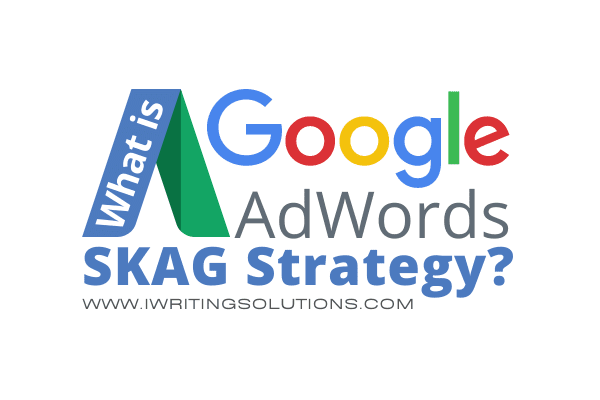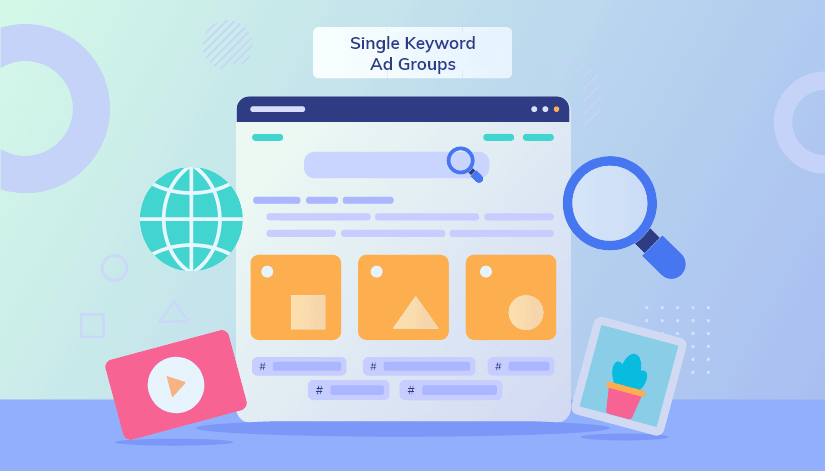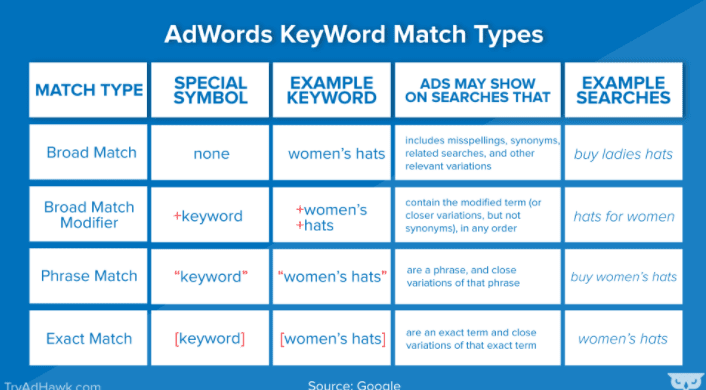| Summary |
| SKAG is a great solution to optimize your Google AdWords campaign, attracting the right kind of traffic to you. By using SKAGs, you can engage with searchers with highly specific topics and keywords, leading to fewer wasted clicks and a higher quality score. They are based on highly targeted keywords supported by high local search volume and competitiveness and produce better conversion rates for less money than broad-match keywords. Using SKAG campaigns, you can run a single search ad with several variations of keywords and see if one performs better than another. This is advantageous for advertising because it will help you improve your strategy by targeting keywords most likely to convert into customers. |
When optimizing your Google Ads campaigns, you should be aware that keywords and search queries are crucial to the success of your campaign. SKAGs are a common way to create campaigns that optimize clickthrough rates.
You will be able to optimize your content and ads for these keyword variations. And when people search with a variety of keywords, it’s important to make sure that all of your campaigns match those variations for your ad copy to appear for them.
Additionally, you will be getting higher quality clicks than your standard keyword groups by optimizing SKAG because you’ll be seeing results that are more closely aligned with searcher intent.
If you’re not using them as part of your strategy, you should consider giving them a try! Here’s everything you need to know.
What Does SKAG Mean?
SKAG stands for Single Keyword Ad Group. This is a strategy that many Google Adwords professionals use to increase the quality score, cost per click, and conversion rate of Google AdWords campaigns.
Generally, Single Keyword Ad Groups are great for attracting the right kind of traffic to you. They help you with the following:
- Engage with searchers with highly specific topics and keywords.
- This leads to fewer wasted clicks.
- Higher Quality Score.
All About Quality Score
Quality Score is a number from 1 to 10 that Google gives your ads and keywords to help measure their quality. A high-quality ad is relevant to what people search for and get results. Google Ads will reward you for higher quality ads because they understand it can lead to more clicks and conversions.
As you can see in the image above, Wordstream evaluated over 30,000 AdWords accounts and found that your Quality Score can have a huge impact on your ad costs. They found increasing your quality score by just one point could result in an average of a 16% decrease in cost per conversion.
Quality Score measures how relevant and useful an ad is to users. Higher quality scores can mean more clicks, better ad positions, and lower costs per click. The components of Quality Score are all designed to ensure that you’re showing the right ads to the right people.
Additionally, the following are the three factors Google takes into account when determining whether an ad will show on the top, middle, or bottom of the page.
- Landing Page Experience
- Expected CTR
- Ad Relevance
How does SKAG or Single Keyword Ad Group Work?
SKAG campaigns are one of the most effective techniques for managing your PPC account. With SKAG, you can run one ad with many variations of different keywords and see if the variations perform better or worse than each other. This can help improve your advertising strategy by targeting keywords most likely to convert into customers.
The best way to take advantage of search ads is to write your title and meta description so that they relate directly to the keyword the searcher typed in.
Using keywords in your ad group title and meta description is a good practice. However, having multiple keywords in an ad group and trying to fit them all in the title and meta description can be tricky. The solution is to ensure that your ad group only has one keyword, which can be done by adding negative keywords to your existing campaign.
For advertisers, accurately targeting the correct keyword is important because it helps meet the searcher’s intent. If you can get the searcher what they want faster, your ads will be more relevant and perform better. In addition, since only one keyword is used, there is no need to include variations or similar keywords in the title or meta description. This technique can lead to fewer errors.
SKAG and AdWords Account Management
SKAG is a part of the best practices for AdWords account management where you group words or keywords with similar intent. This is called “ad group structure,” and it’s important to have it in place so that your messaging is consistent across all ads.
When you use SKAGs, you make sure that you’re using specific ad text customized to both searcher intent and your product or service offering.
Reasons Why SKAG Is A Smart Strategy
Single keyword ad groups are a popular and effective way of organizing your AdWords campaigns, as it allows you to focus on individual keywords and their effectiveness. This simplifies your campaign management and helps you get clear results on what works, what doesn’t, and how much you should spend on each keyword.
- Increased Performance
- Easy Improvement
- Ad Relevance
- Refines Keywords
- Less Discrepancy Ratio
- Strong Foundation
- Optimized
- Easier Work
- Easier Tracking
- Clearer Message
What’s One Benefit of Creating Multiple Ad Groups?
Creating multiple ad groups or partitions is one of the easiest ways to improve your PPC performance. Whether you’re running a single campaign or many, creating ad groups that are tightly focused on specific customer segments is essential for maximizing revenue and minimizing costs.
The main benefit of creating multiple ad groups? You can easily test different ads and landing pages within each group to determine which delivers the best results on top of driving conversions.
Additionally, creating multiple ad groups will allow you to control your budget and bidding. If you have a high-budgeted ad that needs the top positions and creates a separate ad group for this specific campaign, you will be able to control bids more easily. You can also set up different bids for each campaign depending on what kind of clicks or conversions you want.
Steps In Creating SKAGs
SKAGs are incredibly powerful but can also be confusing. Here’s how Google Ads Editor makes it easy to create and manage SKAGs with the ability to save your custom templates.
Keywords
Sometimes, you just want to ensure a specific keyword triggers your ad. With exact match keywords, your ad will show up only when someone searches for that exact phrase.
Phrase match keywords are more flexible—your ad can appear when someone searches with related words. Broad match types accept more than one word around your bid keyword, which gives you extra flexibility if you don’t know what people will search for in the future.
Bids
In the first few weeks of your campaign, you’ll want to set your bids at the same amount. This will ensure you’re paying a fair price for an impression while also allowing data on ad performance to come in so you can adjust your bids accordingly.
First, select a bid in the “Bid” drop-down menu to set your bids. Then, enter the amount you want to bid on each click and ad position. Try starting with at least $0.50 per click.
Ads
When you set up your keywords, you choose the match type of each one. Now’s the time to create your ads.
The two rules for creating ads are:
- Include the keyword in headlines 1 and 2.
- Be creative with headlines 3 and 4 and your description lines 1 and 2.
Keywords can be long or short—there are no character count restrictions here! Remember that it’s okay if a headline is repeated across several ads because different keywords are highlighted in each one.
These two rules will make it easier for you to write your ads. Generally, the more you write, the better you’ll get at producing ads that meet these two rules while also getting their attention and focus. And that means better CTRs and higher quality scores.
Cloning
So you’ve built a great keyword list, which is critical to your success. The next step is to organize them into Ad Groups (AKA SKAGs). Replace Text is a great feature that allows you to clone your original SKAG for similar root keywords rapidly. This helps save time and reduce any errors when creating new ad groups.
When you use Replace Text, your new SKAG will have the same ads as your root keyword but changed to reflect your second SKAG keyword.
Use this method to quickly and easily make a new SKAG out of an existing one—no reworking is needed!
Conclusion
It’s best practice to organize your ads into single keyword ad groups. This allows you to target your customer’s search queries more effectively while ensuring that they see the most relevant ads. Additionally, this ultimately increases CTR and Quality Score, lowering your cost per click.
If you master SKAGs, you will be able to optimize all of your marketing tasks, from social media search engine optimization and mobile advertising, all in one campaign. It’s easy to see why other businesses are raving about SKAGs!
For more helpful content, check out iWritingSolutions.







